| Revista Umělec 2005/2 >> A LANDSCAPE WITH HOLES | Lista de todas las ediciones | ||||||||||||
|
|||||||||||||
A LANDSCAPE WITH HOLESRevista Umělec 2005/201.02.2005 Christian Riebe | expo hannover | en cs de |
|||||||||||||
|
1. Expo-Park East
Let’s assume the following: as a result of general economic decline (something we can only welcome), and the ongoing dumbing down of society, places emerge among agglomerations that reveal all the indications of extreme periphery. These places don’t console the eye with the charm of empty industrial objects with no history, but with cold neglect. They are like craters in the system of constant accumulation of property. The panicky accelerated rat-race for money and land, when it occurs for the short-term and for high stakes, leaves behind a formless wasteland, one beset by doomed architecture—buildings that become ruins soon after being built. These are the ruins of an investment war, upon which the agony of a fresh battlefield looms. Were we to concede that such agony is becoming increasingly part of late capitalist autophagy, we could endow these wastelands an exemplary perspective meaning. Expo-Park East is just such a crater; it came about with the burning of a humongous amount of money and a slackening sense of reality by planners who were rightly seized by panic: foxes dash across the “Boulevard of the EU,” and the homeless empty their bladders on the languishing alleys of the “Rue de Montreal,” where “the nations of the whole world” had been anticipated as guests. Today, this area is haunted by neglected promises lingering from that former euphoria. Whereas there had been a dream of ntasies international and urban harmony, born of that was the exact opposite: a white place, a hole, and an absurd heap of bankruptcy assets that can’t be turned around by any brutal closeout. We must be grateful to the city of Hamburg for this. In a place where everyone goes into such a steep decline, at least the lowest is up front. From here one can see far into the future—much further than from Berlin’s Brandenburg Gate. 2. The Buildings The former pavilions of the world exhibition have deteriorated variously. Some reflect their humiliation with an openness beckoning for sympathy. They continue to carry symbols of national pride, hanging askew; or they boast of lost qualities on shabby boards that no one can read anymore. Behind them everything is shut up with cardboard. Others stand untouched in the middle of the wasteland, harmless and as out of place like Ikea furniture lost on an Arctic ice flow. Still others are victims of handymen. Various tenants, whose intentions are hard to determine, allowed unexpected open windows to illuminate; or they dangled surreally pulsing lights from their buildings, that sway after their owners leftsuddenly departed. There has been a lot of assembling and moving. Entire sections of buildings have been transplanted, some remain lying in the middle of the boulevard. A large Vietnamese restaurant managed to survive in a place where no one would expect a pub. Smaller pavilions have gathered in the interior, as if they had sought protection. Like a red fluorescent conservatory, it lights up the Lower Saxon night. Of course there are also examples of a pure decline. These are grand places plundered to skeletal carcasses, like as the Dutch pavilion which received a prize for the best architecture at the world exhibition. Today it is a gigantic empty shell whose paneling is peeling, whose interior remnants are scattered about the surrounding area. And then there are examples of “successful re-use.” There is a huge and well maintained studio for banal music and some sort of glass car park awaiting the auto industry. There everything is as it was: a naïve utility we can find and see everywhere. Only the Lithuanian pavilion has escaped all this. A compact submarine made of metal plates, it is obviously unsinkable – as if its builders anticipated the fate to which they would be leaving it. It is a superior, not particularly friendly piece of architecture, and it lacks just a few things: wheels, runners or a chain belt. The Expo administrators would like to get hold of the place, and have been threatening to tear it down. 3. Art, From Here on Out Such a place hints at geographical metaphors. It is a landscape dotted with holes: the more it becomes a terrain endangered by collapse, the more enthusiastically it deludes itself into believing in its ability to function. Perhaps (but this is more hope than speculation) even the ‘artificial landscape,’ with its unfalteringly multilingual monologue, with its diligent expansion into various fields of social life—its really unbreakable faith in the future—has long been suffering from subconscious exhaustion? Wouldn’t it want to take part in the general progress? Wouldn’t it seek to be helpful in all spheres—in case of necessity, even without being asked? For that it created a characteristic ‘discourse,’ through which it constantly lectures to a society that could care less. With stubborn vehemence, the contemporary artist knocks on every door imaginable and solicits participation, for a discussion or for a willingness to learn. They become a kind of Jehova's Witness, and live off the compassion of their victims. This urge for communicating in art created from the mediator a secret principle participant: they ask for material that can be easily reworked into speech. Under their direction, art has become a monotonous pedagogical practice and the artist is merely an assistant teacher or a buffoon. We continue wait in vain for an art that would dismiss the utterance, those art works that hold out to us a surface of reflection, permitting neither discussion nor verbal description. We could re-assign and confirm these places that have fallen out of the dressage of the urban area and housing developments the exemplary function; or we could just keep hoping: from here on out we can imagine untrained art production. Everything is what it is, completely without speaking: a solid base with many remnants. Here the system played out its last game for the time being, and lost. Here are its defensive forces, here sleeps any common sense of the nation. And from this sleep, a monster that we impatiently await can be born. 4. The Monster And now the specters, whose time and place are now coming: right now and in advance they change the pseudo-geographic speculation into a passable landscape. On these routes we leave the banal regions of capitalistic idiocy, out of which everything worth anything goes to hell anyway. Let’s turn our attention towards these holes immediately; we find what we are missing there. Let’s imagine a collection of funnel-shaped openings. The degrees of longitude and latitude are cast into it as if into an annulling grounding machine whose driving mechanism is only starting to move—to create something. Let’s imagine the awaiting trap, the granulate of whose quarry new forms are created. And let’s imagine an ‘artist’ down there, who in these conditions can hardly be more than a hysterical midwife. What is this obscure polonaise arising here? And how do its elements reflect in the usual mechanisms of identified speech, which is overloaded by having to name things other than its own young ones? Does the installation show some kind of a circus, or a gondola of tarred boxes full of curses and old-fashioned endearments, as a cohort of glossy spirals, circling around something? Does it smell of chlorine and pitch or like a burning beehive? Could it be a Biedermeier table, a blister, a vase, a big heap of fish?
01.02.2005
Artículos recomendados
|
|||||||||||||
|
04.02.2020 10:17
Letošní 50. ročník Art Basel přilákal celkem 93 000 návštěvníků a sběratelů z 80 zemí světa. 290 prémiových galerií představilo umělecká díla od počátku 20. století až po současnost. Hlavní sektor přehlídky, tradičně v prvním patře výstavního prostoru, představil 232 předních galerií z celého světa nabízející umění nejvyšší kvality. Veletrh ukázal vzestupný trend prodeje prostřednictvím galerií jak soukromým sbírkám, tak i institucím. Kromě hlavního veletrhu stály za návštěvu i ty přidružené: Volta, Liste a Photo Basel, k tomu doprovodné programy a výstavy v místních institucích, které kvalitou daleko přesahují hranice města tj. Kunsthalle Basel, Kunstmuseum, Tinguely muzeum nebo Fondation Beyeler.
|








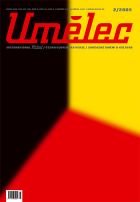













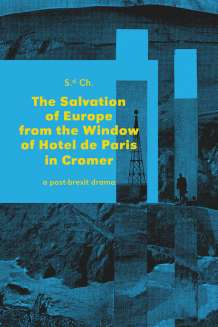




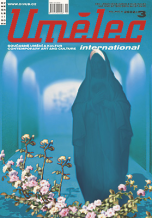
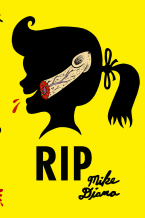
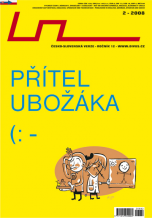
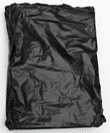


 New book by I.M.Jirous in English at our online bookshop.
New book by I.M.Jirous in English at our online bookshop.
Comentarios
Actualmente no hay comentariosAgregar nuevo comentario